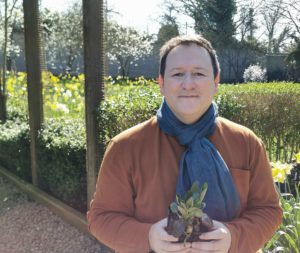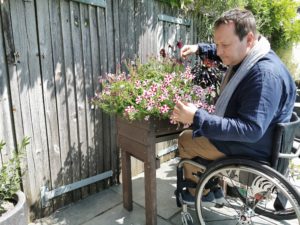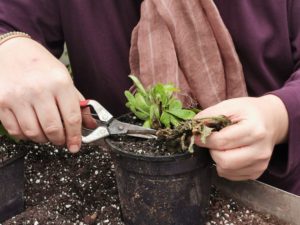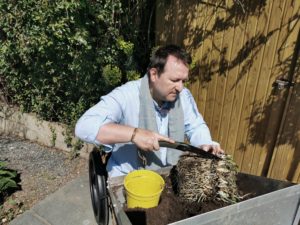Composting for a Healthy and Sustainable Garden
My name is Michelle. I am the owner of Shellbie’s Garden LLC. As part of my business, I create dried flower and nature-inspired gifts and home décor with the flowers that I have grown from seed. I love plants, flowers, and gardening, and growing my own flowers and using them for my business is always an enjoyable and rewarding experience.
There are many factors involved in having a successful and healthy garden. It takes research, time, hard work, an open mind, and quite a bit of patience. I find that gardening can be both challenging and rewarding. One thing is true…each day in the garden is a learning experience.

Gardening is not simply throwing some seeds on the ground and waiting for them to grow. There are certain things that need to be done if you want to reap a good harvest. Aside from dealing with common garden issues such as insects and animal pests, weather-related factors, and other problems that can thwart your success, I have learned that I will have a much healthier garden if I have good garden soil.
I decided to improve and amend my soil, however, instead of buying countless bags of compost at the store, I chose to try my hand at making my own. I had wanted to try it for a long time, and I finally took the plunge. I believe making your own compost is rewarding, money-saving, and great for the garden.

What is compost? Compost is decomposed organic material that you can add to your soil to help your plants grow and thrive. Over several months, microorganisms break down the biodegradable material to create a rich, dark, nutrient-filled soil called humus. If you start composting in autumn, you should have some nice soil amendment for spring. A good compost should consist of a balance of the following materials:
· Browns such as dead leaves, twigs, branches to add carbon
· Greens such as fruit/vegetable scraps, grass clippings, coffee grounds to add nitrogen
· Water for moisture, but compost should not be sopping wet or soggy
· Oxygen for compost to thrive and to aerate it to prevent bad bacteria and rot

Why is compost good for the garden? The rich humus created from composting feeds the soil, produces healthy plants, suppresses pests and diseases, and reduces the need for chemical fertilizers. In addition, unlike store-brought fertilizers, which can be expensive, compost is free. Lastly, having a compost bin is sustainable because composting is a natural process of recycling organic materials, and it lowers your carbon footprint.
How do you compost? If you have plenty of outdoor space, you can create an area any size you prefer in your yard, or you can simply buy a large trash can with a lid. I decided on the trash bin and purchased two 32-gallon containers. I also bought a mini metal trash can with a lid for the kitchen for fruit and vegetable scraps. I dump the little can in the larger bin once a week.

Before you start filling your compost bin, drill five holes in the bottom and several holes around the entire bin to allow oxygen into the container. (See picture below for an example). When you start adding to your compost pile, begin with a layer of twigs or straw to allow oxygen to enter from the bottom and to prevent the materials on the bottom from getting slimy or producing bad bacteria. When adding materials, make sure the pieces aren’t too large. If they are, chop or shred them to help them decompose faster. Add alternating layers of green matter for nitrogen, and brown matter for carbon. When the bin is full, cover and let it sit for the winter. Every few weeks, you should turn and mix the compost with a pitchfork. This provides oxygen which helps to aerate the pile and quickly break down the materials. This is important, because if the compost is too wet, it will become slimy, bug-infested, and have a terrible smell. If this happens, you will not be able to use the compost. Conversely, if the compost is too dry, it will be too dusty and unable to decompose, so try to have it moist, but not drenched.

In summary, the secret to a healthy compost is to make sure it receives oxygen, some moisture, balanced layers of green and brown materials, and make sure to turn it a few times over the winter.

Thanks for reading and keep growing!
Shellbie
Click to visit Shellbie’s Garden:
https://www.shellbiesgarden.com











